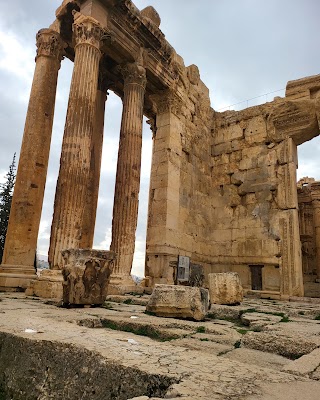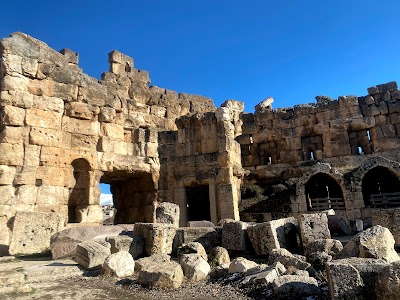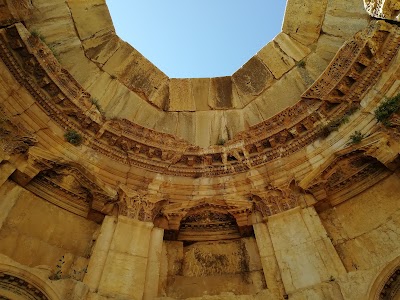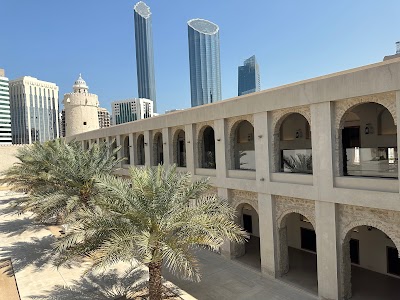Temple of Jupiter (معبد جوبيتر)
Related Places
Overview
Located in the breathtaking landscapes of Baalbek-Hermel in Lebanon, the Temple of Jupiter stands as one of the most significant and awe-inspiring remnants of the ancient world. This monumental structure is part of the larger Baalbek temple complex, which also includes other notable edifices such as the Temple of Bacchus and the Temple of Venus. A must-visit destination for history enthusiasts and architecture lovers, the Temple of Jupiter offers a unique opportunity to immerse yourself in Lebanon's rich cultural tapestry.
Constructed during the Roman period, the Temple of Jupiter was dedicated to the Roman god Jupiter Heliopolitanus. Baalbek, known as Heliopolis in antiquity, flourished as a prominent city within the Roman Empire. The temple's construction began in the mid-1st century AD under the patronage of Emperor Augustus and was completed during the reign of Emperor Trajan in the 2nd century AD. This lengthy construction period underscores the scale and ambition behind this architectural marvel.
One of the temple's most striking features is its grand size. Originally, the complex boasted 54 massive columns, each standing an impressive 20 meters tall and weighing nearly 100 tons. These colossal columns supported a richly decorated entablature, creating a magnificent façade visible from miles away. Today, only six of these monumental columns remain standing, yet they continue to inspire awe and wonder among visitors, offering a glimpse into the grandeur that once defined this sacred site.
The significance of the Temple of Jupiter extends beyond its architectural prowess; it served as a major religious center in the Roman world, attracting pilgrims from across the empire. The rituals and ceremonies conducted here played an integral role in the spiritual life of Heliopolis, highlighting the cultural and political importance of Baalbek as a bustling hub of activity and worship.
In addition to its historical and religious significance, the Temple of Jupiter is an archaeological marvel. The precision and ingenuity involved in its construction are evident in every stone and column. The materials for the temple were sourced from nearby quarries, and the massive stones were transported and lifted into place using techniques that continue to baffle modern engineers. When you visit this site, you'll marvel at the exquisite craftsmanship that has withstood the test of time.
The allure of the Temple of Jupiter is further enhanced by its surrounding landscape. Nestled in the fertile Bekaa Valley, Baalbek is enveloped in breathtaking natural beauty. The combination of historical grandeur and scenic vistas creates an unforgettable experience. Tourists often find themselves captivated by the interplay of ancient architecture and the serene environment, making a visit to Baalbek not just a journey through history but also a profound connection with nature.
Interesting facts about the Temple of Jupiter heighten its appeal. The Baalbek complex is home to some of the largest cut stones in the world, including the famous "Stone of the Pregnant Woman" and the "Stone of the South." These massive megaliths, located in a nearby quarry, stand as a testament to the incredible engineering skills of ancient builders and remain a subject of fascination and study.
Moreover, the Temple of Jupiter has captured the imagination of historians, archaeologists, writers, and artists throughout the ages. Countless chronicles and artworks have sought to capture its majesty, further cementing its place in the collective cultural consciousness. Its formidable presence and historical depth have earned it a spot on the UNESCO World Heritage list, ensuring its preservation for future generations to appreciate and learn from.
In conclusion, the Temple of Jupiter in Baalbek is far more than just an ancient ruin; it represents human ingenuity, cultural richness, and spiritual depth. Whether you are drawn by its historical significance, architectural splendor, or the sheer magnitude of its construction, a visit to this iconic site will undoubtedly leave a lasting impression. As you walk among the columns that have stood for millennia, you will feel a powerful connection to the past and the enduring legacy of one of the ancient world’s most remarkable temples.
So, if you find yourself in Lebanon, make the journey to Baalbek in the Baalbek-Hermel region. Stand in the shadow of the titanic columns, breathe in the stories embedded in the ancient stones, and let the Temple of Jupiter transport you to a time when gods walked among mortals and the boundaries of human achievement knew no limits.







